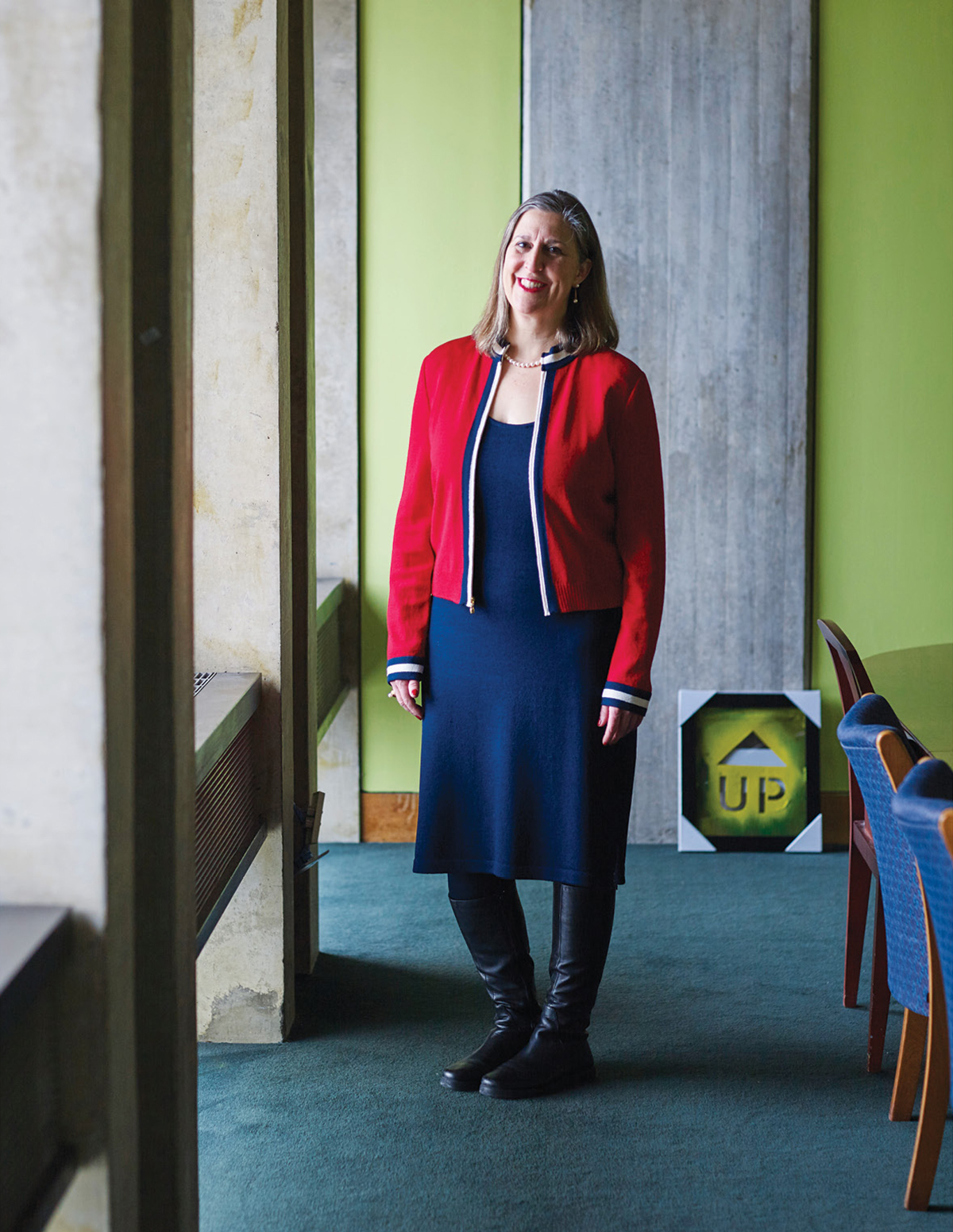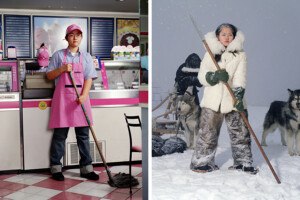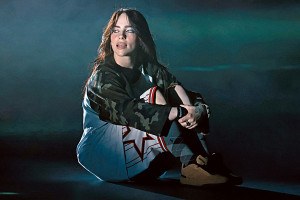Boston’s Creative Crisis

Arts and culture chief Julia Burros. “Democracy is messy,” she says. / Photograph by Christopher Churchill
It started at Joyce Linehan’s kitchen table back in 2013. She and her longtime pal, then–Dorchester State Representative Marty Walsh, were talking policy. He was running for mayor. She was a chief adviser (known to some, including Senator Elizabeth Warren, as the “decider”) and a veteran influential player in the city’s arts and music scenes. As a former rock promoter, she’d introduced many indie and punk bands to Boston audiences. As for Walsh, he introduced a bill to name the Modern Lovers’ “Roadrunner” the official rock song of Massachusetts—at her suggestion. As the two discussed strategy, arts and culture jumped to the top of the list. Linehan is an expert on the topic, having handled publicity for such signature organizations as ArtsEmerson, the Institute of Contemporary Art, and First Night Boston. The two discussed resurrecting a cabinet-level “arts czar” position. They batted around the notion of launching a citywide cultural plan to address issues that have plagued Boston’s arts community for years: underserved neighborhoods, unaffordable artist housing, insufficient funding, and inadequate facilities.
The seeds laid during that table talk were planted more firmly when officials from the Barr Foundation approached the campaign, suggesting that they would fund an arts planning process plan if Walsh were elected.
Elected, he was, after courting the arts community and billing himself as the “arts mayor.” Fast-forward. Walsh made good on his promise to hire a chief of arts and culture, bringing in Julie Burros from Chicago in 2014. Linehan became chief of policy, and in April 2015, the city announced Boston Creates, a sweeping initiative to build a road map for the city’s cultural future.
The proposal was ambitious: The administration aimed to spend an entire year soliciting ideas from seemingly every citizen in every neighborhood. It sought to develop new ways to provide equity and access in a town long known for its silos and for the entrenched perception that certain cultural institutions are not welcoming to all. It vowed to redefine culture to equally value artists in studios, actors in theaters, and grannies in knitting circles. The vision was grand, the potential impact enormous. And the time was ripe: new mayor, new “arts czar,” new administration, new mindset.
But as the months have moved on, the tangible results have been underwhelming, and insiders have questioned whether a workable plan can emerge. A Boston Creates summary report released in March cited such ephemeral goals as creating “fertile ground,” but failed to pinpoint action items and deliverables. The yearlong, $1.4 million process—which I followed closely, attending numerous meetings over the past year—shows what can happen when governance gets muddled with handholding exercises and endless focus groups.
From the beginning, Mayor Walsh stressed that Boston Creates is not his vision: “It’s your vision,” he has told his constituents repeatedly. Indeed, back when Boston Creates was announced, folks at City Hall were upbeat and ambitious and committed to crafting what promised to be the most inclusive planning process the city had ever seen. “The big challenge is to make sure we are hearing all the voices and that everyone is represented,” Linehan said during an interview in Walsh’s office last year. “It is an open-door policy,” Walsh echoed. “You don’t have to wait for someone to ask you to the table.” And, he added, “Boston is hungry for it.”
Hungry, indeed.
Last June, more than 450 people crammed into the auditorium at English High School, in Jamaica Plain, to attend the first town hall meeting for Boston Creates, which is funded equally by $700,000 grants each from the Barr and Klarman foundations.
As participants streamed into the building that evening, they were urged to fill out slick nametags asking the question, “What do you create?” Responses ranged from mayhem to music to wedding cakes. Fresh-scrubbed, smiling volunteers handed out postcards emblazoned with the campaign’s bright, bold logo, bearing slogans such as “Everyone creates. What do you do?” The event had the feel of a happiness convention mixed with a neighborhood fair, but without the free samples of fruit smoothies and meat on toothpicks.
Walsh himself wasn’t in attendance, but after a performance by the English High Drum Corps, Burros took the stage to enthusiastic applause. A tall, unflashy woman with a huge smile and a preference for practical pumps, Burros, 51, is utterly without pretense. In an interview in her office before the event, she told me she would be “listening, listening, listening” because the planning process was “big, big, big”—so giant, in fact, that it would cover the “whole kit and caboodle.” At the town hall, she seemed to embody the role of upbeat arts cheerleader rather than formidable “arts czar.” “Is anyone an artist?” she asked the crowd, flashing that earnest grin, and many hands waved in the air. “Anyone work at an arts organization?” More hands. After the team roll call, the cheery Burros promised “big, new, bold gestures for Boston.”
But the pep-rally spirit dissipated when two consultants took the stage: David Plettner-Saunders, a San Diego–based consultant with the Cultural Planning Group (CPG), the firm charged with running the process, and Alan Brown, of WolfBrown, a consultancy with an office in Cambridge. Their task was to explain the so-called theoretical framework of the plan and the concept of “creative capital,” the idea that creativity is a community asset, similar to drinking water and public transportation. A woman with two small children quietly left. One longtime fixture in the arts world later noted, with incredulity, that for all the talk of inclusion, the presenters at the debut town hall were a homogenous bunch.
The energy was revived, however, when participants broke into small groups to discuss the critical question at hand: What does the city need to ensure that Boston is a vital, world-class cultural center where every citizen feels part of the creative fabric? “We will collect and review every idea,” Brown promised the crowd, “but we have time tonight for just a taste of your ideas.”
He wasn’t kidding about the taste part.
I found myself in a classroom with an animated group of people who truly reflected the city’s diverse population: all ages, all races, individual artists, administrators, community activists, and the just plain curious. A very young moderator called the meeting to attention. “Imagine a metaphysical sandwich,’’ she said. “Boston is the bread. What kind of filling are you?”
Radio silence.
With some prodding, the participants went around the room, creating a metaphysical meal. One woman chose avocado, because it’s smooth and creamy. The list included cilantro, wasabi, honey mustard, jalapeño and—my personal favorite—textured vegetable protein. It’s good for you and you can do a lot with it.
Once the sandwich drill was digested, participants dug into the real issues at hand, generating a thorough list of needs that should come as no surprise to anyone familiar with Boston’s arts scene: affordable artist housing, more performance and rehearsal space, increased grant money, a dedicated revenue source, a streamlined permitting process, arts education, communication, and diversity and equity. And people were already asking about accountability, implementation, and funding.
The same issues arose again and again last summer, when team leaders recruited by the city convened community meetings in 16 neighborhoods. Many of the meetings had a similar kumbaya flavor. In Roxbury, participants took turns stating their superpower. In Charlestown, attendees were asked to draw a picture of what makes them happy. “I was with a few other artists, and that wasn’t how we wanted to be spending our time,” says Mary Curtin, a longtime artist and arts promoter who lives in Charlestown.
Instead, citizens wanted to dig into serious policy. Artists want tools and support, not exercises that are better suited to a self-actualization workshop at Kripalu. When young artists can’t afford to live here, does the city really need to spend part of its $1.4 million planning budget making metaphysical sandwiches and discussing superpowers? In the neighborhoods, citizens want diverse cultures to be celebrated and acknowledged. People simply want, to echo Walsh’s words, a place at the table.
The scope of the planning process has been, without a doubt, one of the widest and most inclusive in city history. In addition to the town hall meetings, Boston Creates conducted 118 community conversations, 50 one-on-one meetings with stakeholders, and 35 focus groups. A full 3,224 people took an online survey, which was available in four languages. The team spent last summer distributing slick marketing flyers (“What does creativity mean to you?”) and gathering input from people at farmers’ markets and cultural festivals.
But such an exhaustive undertaking isn’t easily managed nor, apparently, easily synthesized. “Democracy is messy,” Burros told me early on in the process during an interview in her office at City Hall. “It is a beautiful, beautiful mess. You want to be inclusive. You want everyone’s voice to be heard, but you have to structure it.”
Casting such a wide net can create a lot of noise—and a fair amount of self-interest. Often, citizens have a “What’s in it for me?” attitude at public meetings, and many questions at various forums began with the pronoun “I” and addressed the concerns of a constituency of one. How do you cut through the chatter and create a tangible plan that works? “You have to think about implementation from day one,’’ Burros said. Plans that aren’t achievable, she allowed, “are a waste of time.”
As the former director of cultural planning for Chicago, Burros was instrumental in developing that city’s 2012 plan. The Boston Creates process mirrors the citywide efforts in Chicago in many ways. “This is your plan!” seems to be the mantra of both endeavors. But the machinery around the Boston process is heftier. In addition to CPG and WolfBrown, there are five other outside consulting groups involved, with a branding firm, a communications agency, and a community-engagement operation among them. And the bedrock of the process is that notion of creative capital. “For a city to be culturally vibrant, its citizens as well as its institutions need to be culturally engaged,’’ says Dennie Palmer Wolf, the principal at WolfBrown who developed the concept. “When we talk about creative capital, we are talking about the capacity of citizens to engage and enjoy and learn from and pass on heritage.”
But how do you transform abstract theory into an actual plan for an actual city that actually works? Early on in the process, Martin Cohen, of CPG, explained that the consultants would take the mountains of data from scores of meetings and subject it to quantitative and qualitative analyses to formulate the plan. He also said that the team would present a full draft at a town hall meeting in March. “At the end, we will have clear intentions,” he vowed. That was a promise that raised hopes and expectations for the meeting in March. And Wolf echoed that promise. “The challenge is to make sure it gets concrete and that the very widespread participation throughout the city is rewarded.”
But how many handholding exercises does it take to identify intentions that were clearly articulated at the very first town hall meeting? From the start, there was a disconnect between the “Let’s imagine” approach of the outside consultants and the “Let’s be real” attitude of local artists and administrators who are in the trenches making art flourish every day.
A group called the leadership council—comprising corporate CEOs, foundation executives, arts advocates, and such notables as Boston Pops conductor Keith Lockhart—met several times during the year. And at a meeting last September at the Calderwood Pavilion, these heavy hitters spent 30 minutes doing a “visioning” exercise led by CPG consultants.
“Move beyond a list of needs and wants and allow yourselves to aspire,” Plettner-Saunders, of CPG, instructed the group. The outside consulting firm, which was allocated about a third of the $1.4 million budget, was clearly the driving force behind this self-discovery approach to Boston Creates. Many council members embraced the exercise, but some had real-world issues on their minds. Nicole Agois Hurel, a program director with the special-needs arts organization VSA Massachusetts, repeatedly insisted the arts should be accessible for people with disabilities. The city’s online survey asked multiple questions about cultural and gender identification, but didn’t ask specifically about disabilities, beyond a generic question about barriers to entry. Hurel was concerned with actionable issues like transportation, accessibility, programming, and staffing.
And World Music/CrashArts executive director Maure Aronson had his feet planted firmly on the bottom line. “The question that came from our table is how do you actually fund this vision,” he said.


